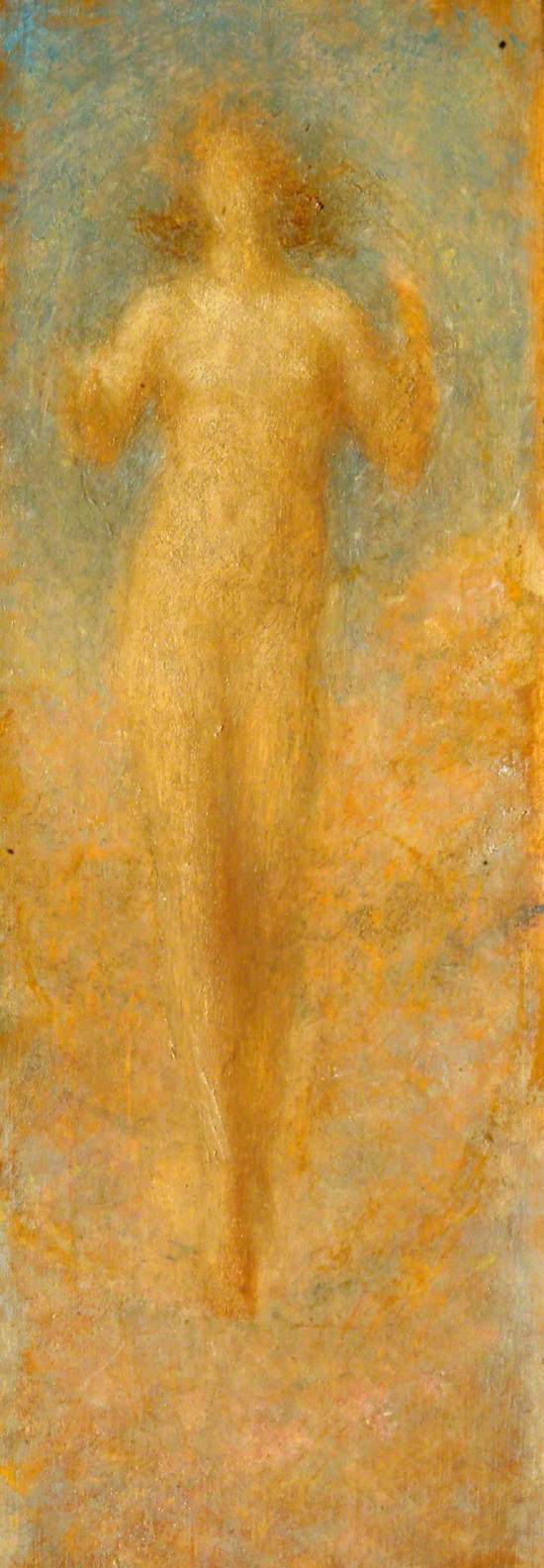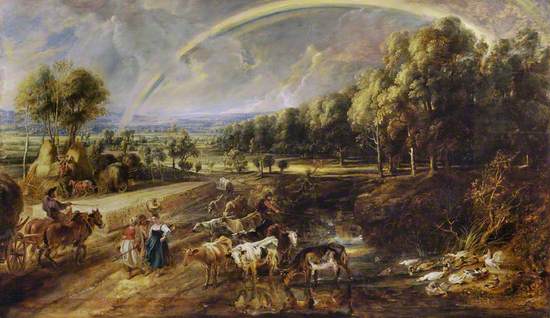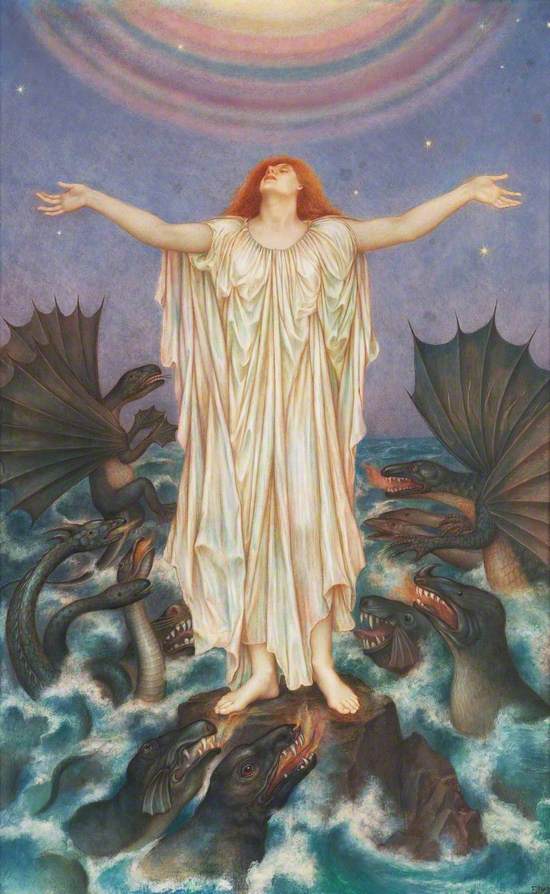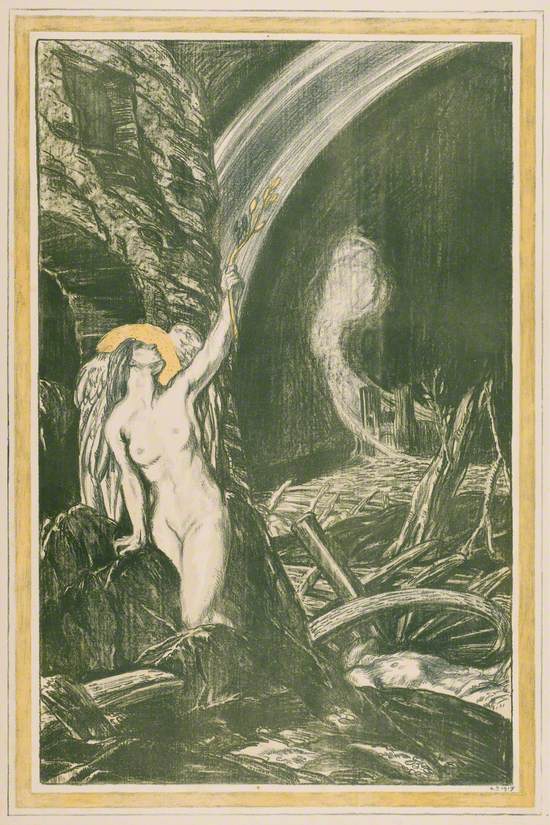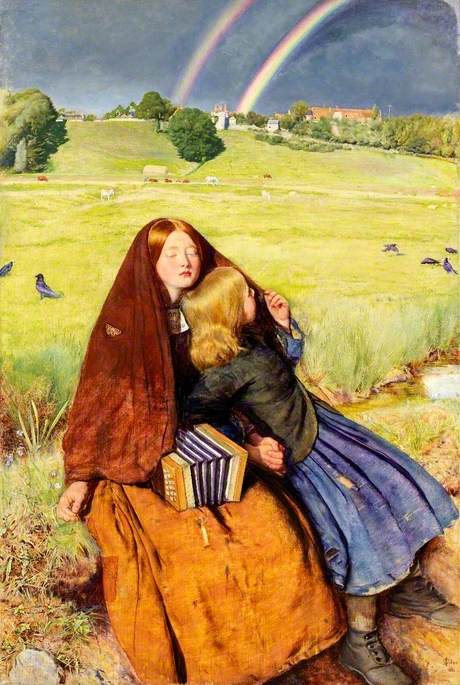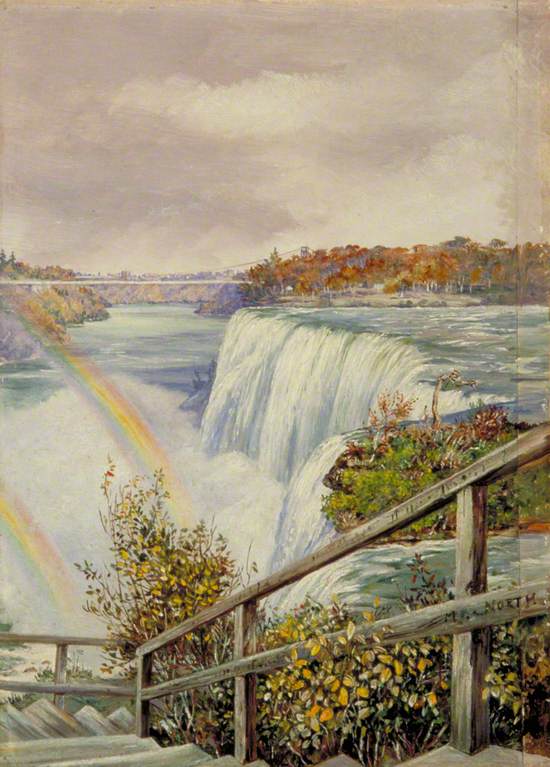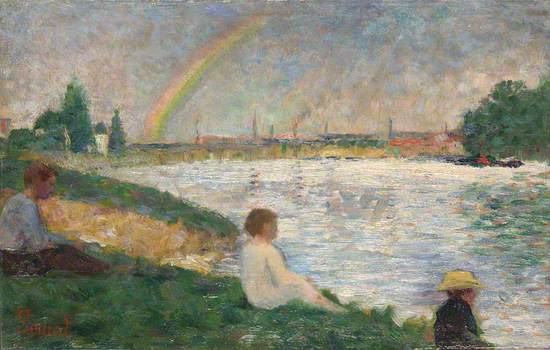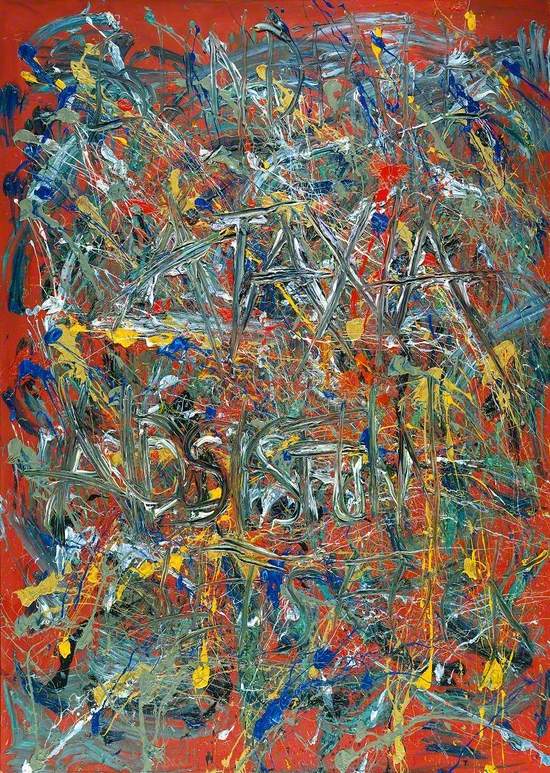Rainbows are a multicoloured circular arc that are formed by the reflection, refraction and dispersion of light in water droplets, hence why they most frequently appear after rainfall. This beautiful meteorological phenomenon has captured the imagination of artists, writers and other creatives for millennia, and its image and colour spectrum find meaning in a plethora of different contexts.
For Pride Month, Art UK wanted to explore the significance and symbolism of the rainbow in art, from being a sign of salvation from God to the proud colours of the flag of the LGBTQ+ community.
The Biblical rainbow
Chapters 6-9 of the Book of Genesis describe a global flood sent by God intended to decimate the world and wash away humanity's corruption. Before the flood, the righteous Noah is instructed to build an ark and populate it with his family and two of every animal. The flood is said to have raged for 150 days before the waters subsided.
This painting by Daniel Maclise depicts the glorious moment after the flood where Noah builds an altar to God and makes a sacrifice, to which God responds by placing a rainbow in the sky as a promise that He would never again destroy the earth with a flood. This promise was henceforth known as the Noahic covenant.
Daniel Maclise (1806–1870)
Oil on canvas
H 206 x W 254 cm
Leeds Museums and Galleries
Iris: The rainbow goddess
In Greek mythology, Iris is the personification and goddess of the rainbow and messenger of the gods. She is one of the goddess of both the sea and the sky and she links the gods to humanity through the rainbow. In some texts she is depicted wearing a coat of many colors that she uses to create the rainbows that she rides to get from place to place. The goddess is as elusive and unpredictable as the rainbow itself, brilliantly shown in this shimmering portrait by George Frederic Watts.
The rainbow represents bridges between the earth and the gods in several other mythological traditions including Norse, Navajo and Maori mythology. In the ancient beliefs of Japan, rainbows were the bridges that human ancestors took to descend to the planet.
George Frederic Watts (1817–1904)
Oil on canvas
H 53.3 x W 20.3 cm
Watts Gallery – Artists' Village
The rainbow landscape
Rubens painted this piece as a companion to his work 'An Autumn Landscape with a View of Het Steen in the Early Morning'. The two pictures celebrate Rubens’s deep love for the landscape of Brabant and depict the view from his château.
This painting, however, is not a simple naturalistic record. Rather it recreates a vision of his native countryside in order to convey not just what he saw, but also what he thought and felt about the land and man’s relationship to it. Thus the rainbow recalls the covenant made between God and man after the great flood and the harvest can be seen as man’s just reward for his labour.
Peter Paul Rubens (1577–1640)
Oil on oak panel
H 135.6 x W 235 cm
The Wallace Collection
The rainbow as the afterlife
English painter Evelyn De Morgan responded to the horror of World War 1 with a series of works that attempted to come to terms with the conflict between good and evil.
The sole female figure in white robes symbolises the innocence of the victims of war. She stands upon a solitary rock, hands outstretched and her eyes turned towards heaven, seeking both physical and spiritual deliverance from her plight as she is besieged by a myriad of sea serpents. Dragons and sea monsters are often used in Evelyn’s symbolist lexicon to reference evil and death. However, here, Evelyn produces a ray of hope for eventual salvation with the addition of the rainbow – symbolic of the afterlife. The glittering rainbow is a popular motif in De Morgan's work.
The rainbow as rebirth
This work forms part of the portfolio ‘The Great War: Britain’s Efforts and Ideals’, a series of 66 lithographic prints commissioned by the Ministry of Information in 1917.
In this piece, we see the figure of Arts, in the form of a woman, rising from the ruins, death and devastation of war, holding a sprig of bay leaves, a symbol of glory. A rainbow, representing hope and a new era, appears over the desolation. Rainbows have frequently been used as a sign of social change such as the rainbow flag of the German Peasants' War in the 16th century and the 'rainbow nation' of the newly democratic South Africa.
Charles Haslewood Shannon (1863–1937)
Colour lithograph on paper
H 80.4 x W 51.3 cm
Amgueddfa Cymru – National Museum Wales
Millais' double rainbow
The Blind Girl is a painting by John Everett Millais which depicts two itinerant beggars, one of whom is a blind musician, her concertina on her lap. They are resting by the roadside after a rainstorm, before travelling to the town of Winchelsea, visible in the background.
Millais' painting has been interpreted as an allegory of the senses, contrasting the experiences of the blind and sighted girls. The former feels the warmth of the sun on her face, and fondles a blade of grass, while the latter shields her eyes from the elements and looks at the unusual spectacle of a double rainbow that has just appeared. This rainbow has also been understood in Biblical terms, as a sign of God's promise to humankind after the great flood.
John Everett Millais (1829–1896)
Oil on canvas
H 80.8 x W 53.4 cm
Birmingham Museums Trust
Rainbows over a waterfall
Marianne North was a prolific English traveler, biologist and botanical artist in the Victorian era. North produced nearly 1,000 works in 20 years, travelling across the globe, documenting the flora, fauna and culture that she encountered. The vast majority of these works are held at Kew Gardens.
In this delicate oil on board, we can see a double rainbow formed over Niagara Falls in North America. The rainbow adds an exciting splash of colour to a view dominated by blue-white water.
This work was done during her travels to Canada, the United States and Jamaica in 1871-1872, her first trip to the Americas. The artist captured a double rainbow once again in her work 'View of the Artist's House in Jamaica with a Double Rainbow'.
Marianne North (1830–1890)
Oil on board
H 35 x W 25 cm
Royal Botanic Gardens, Kew
A post-impressionist rainbow
Georges Seurat's painting The Rainbow: Study for 'Bathers at Asnières' depicts three figures enjoying an idyllic riverbank scene with a rainbow across the sky.
This oil on wood piece was a study for Seurat's monumental work Bathers at Asnières that would be completed the following year. The final Bathers at Asnières does not in fact feature a rainbow and the lines of the paintings are much more defined and concrete. Seurat uses a variety of means in his final piece to suggest the baking heat of a summer's day - such as a hot haze that softens the edges of trees and a blue sky that fades to whiteness - so a rainbow - that suggests recent rainfall or a storm - did perhaps not suit his final vision.
Georges Seurat (1859–1891)
Oil on wood
H 15.5 x W 24.5 cm
The National Gallery, London
.
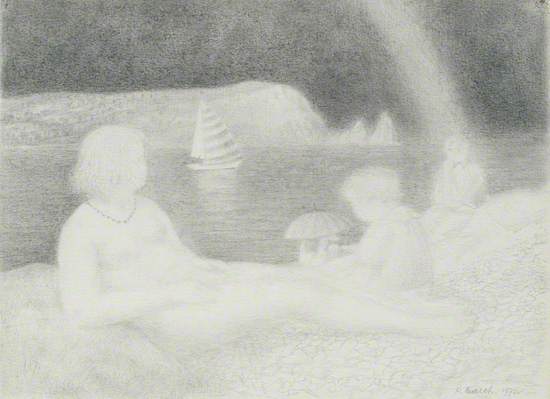
The colourless rainbow
English painter Richard Ernst Eurich makes a notable decision in this pencil sketch to depict a rainbow without any colour. In the foreground, we see (presumably) a mother and child enjoying a day at the beach. Some other figures - including a pair under a parasol - fade into the distance. The mother-figure is looking out over the water to a white-grey smudge that the title tells us is a rainbow.
Eurich manages to masterfully represent a rainbow without colour through giving the arc no firm outline to create the impression of a slight glow or transient quality. Eurich's work was known for its sense of mystery and wonder, and this sketch is no exception.
Richard Ernst Eurich (1903–1992)
Pencil on paper laid to board
H 20 x W 28 cm
The Ingram Collection of Modern British and Contemporary Art
.
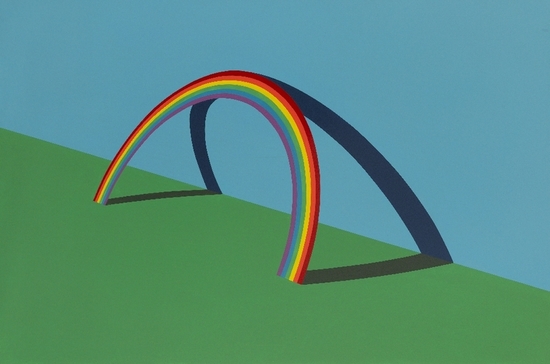
The reverspective rainbow
British artist Patrick Hughes created the idea of reverspective, an optical illusion on a three-dimensional surface where the parts of the picture which seem farthest away are actually physically the nearest.
In the 1970s, which saw great progress in the LGBTQ+ rights movement, Hughes hung his investigations of perception and illusion on the motif of the rainbow in a series of works, including Leaning on a Landscape.
Hughes wanted to turn the transitory event of the rainbow into something that has a mass, permanence and personality. Hughes rainbows are the reverse of the romantic: they are hard-edged, leaning against walls, emerging from dustbins, posted through letterboxes. Rainbows here are intended to be a solid experience.
Patrick Hughes (b.1939)
Gloss paint on board
H 121.9 x W 182.5 cm
Arts Council Collection, Southbank Centre
1978, gloss paint on board by Patrick Hughes (b.1939)
The rainbow and the AIDS crisis
In the 1990s, the AIDS crisis was at its peak with tens of thousands of people dying each year in the United States. The disease primarily effected gay men and social stigma meant many men did not get tested and spread the disease unknowingly within the community.
This work by the artist, film director and author Derek Jarman utilises a rainbow palette to display a devastating message about how AIDS ravished his body. Jarman died of an AIDS-related illness in 1994, only one year after completing this painting.
The rainbow flag and colours were first used to represent the LGBTQ+ community in the 1970s. The different coloured stripes were intended to represent life, healing, sunlight, nature, art, serenity and spirit respectively.
#RainbowsForNightingale
Dring the Covid-19 pandemic, rainbows took on a new significance as a symbol of support for people wanting to show solidarity with NHS workers on the front line. The trend was created by an NHS nurse who wanted to create "a sign of hope" for patients and staff in hospitals across the country. Since then, parents and children have been displaying their rainbow art on windows, doors and roads across the country.
Some members of the LGBTQ+ community have been uncomfortable about the re-appropriation of the rainbow for this purpose, especially during Pride Month, but, as shown, the rainbow has been an enduring symbol of hope in art and culture for centuries.
Following the pandemic, rainbows may become more commonplace in hospital artworks.
unknown artist
Oil on canvas
H 60 x W 100 cm
East Lancashire Hospitals NHS Trust
Explore artists in this Curation
View all 12-
 Georges Seurat (1859–1891)
Georges Seurat (1859–1891) -
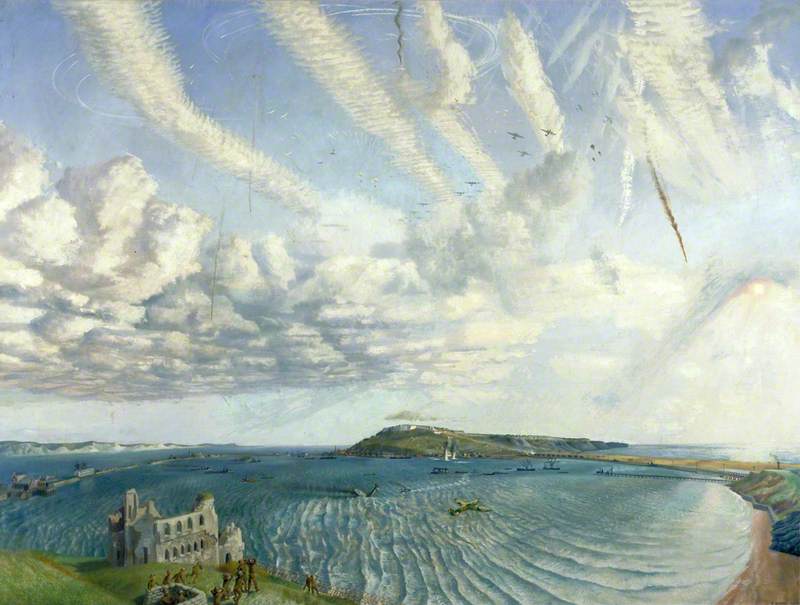 Richard Ernst Eurich (1903–1992)
Richard Ernst Eurich (1903–1992) -
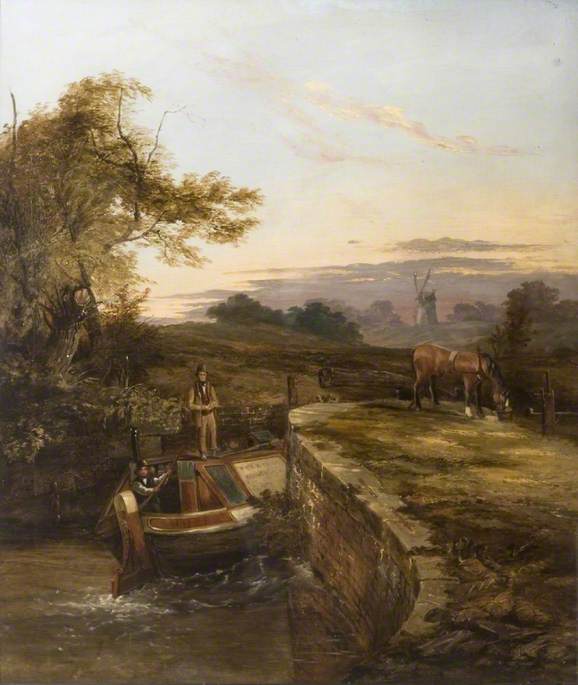 unknown artist
unknown artist -
 Patrick Hughes (b.1939)
Patrick Hughes (b.1939) -
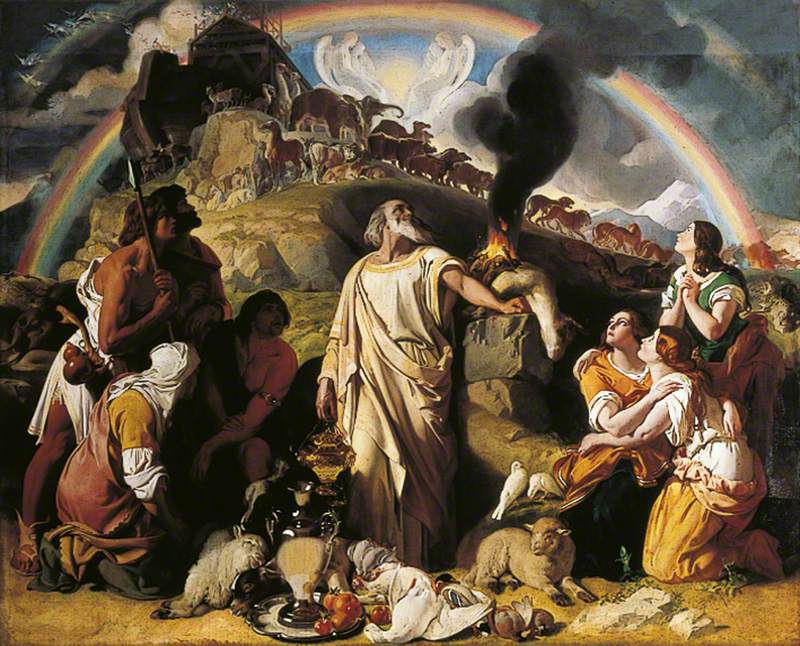 Daniel Maclise (1806–1870)
Daniel Maclise (1806–1870) -
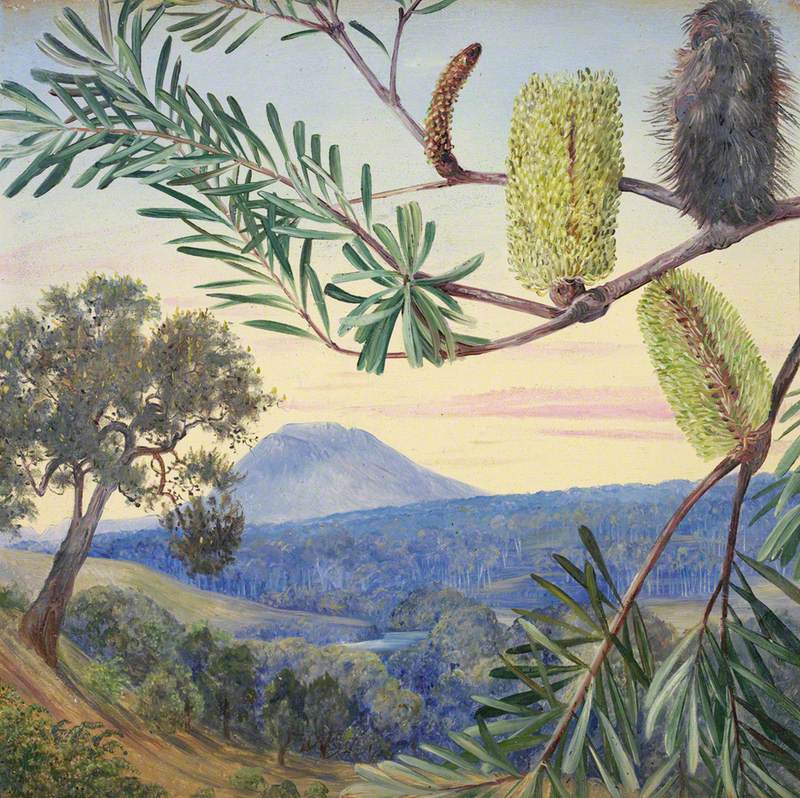 Marianne North (1830–1890)
Marianne North (1830–1890) -
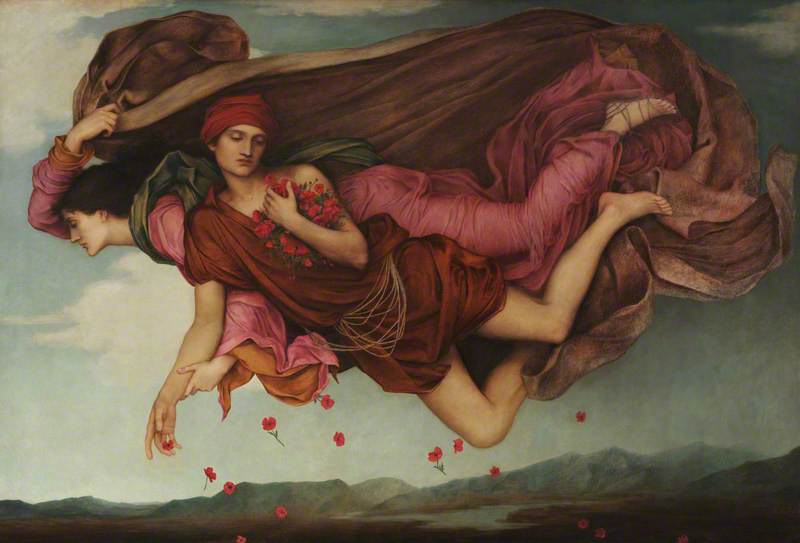 Evelyn De Morgan (1855–1919)
Evelyn De Morgan (1855–1919) -
 Charles Haslewood Shannon (1863–1937)
Charles Haslewood Shannon (1863–1937) -
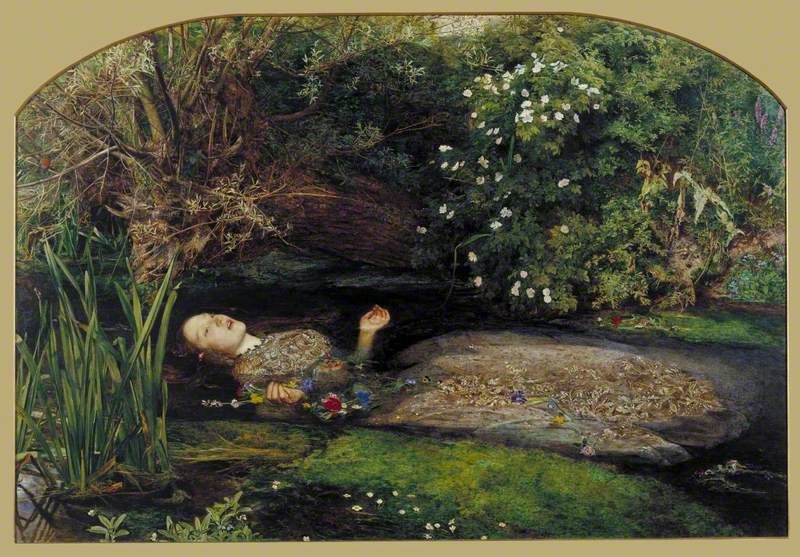 John Everett Millais (1829–1896)
John Everett Millais (1829–1896) -
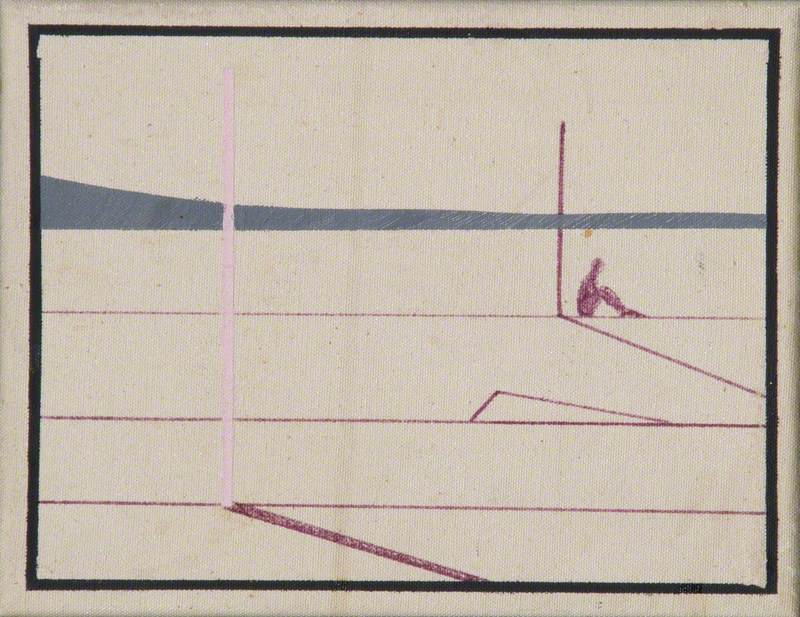 Derek Jarman (1942–1994)
Derek Jarman (1942–1994) - View all 12

